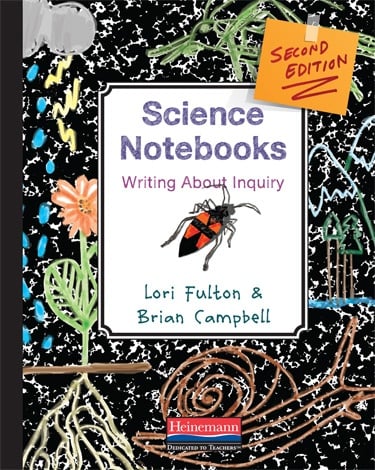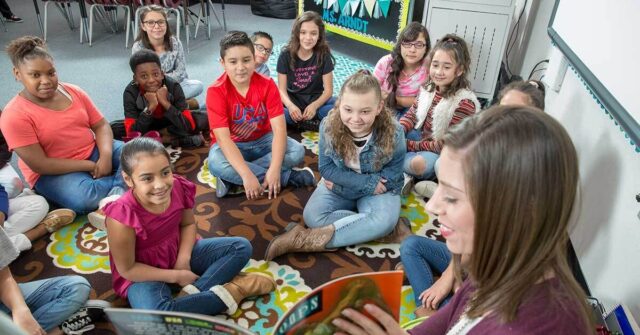The bestselling first edition of Science Notebooks inspired thousands of teachers to use science notebooks as a powerful way to help students reveal and develop their thinking about scientific concepts, do the work of scientists and engineers, and exercise language skills. In today’s post, authors Lori Fulton and Brian Campbell share their backgrounds as science educators and writers. In Part II, you’ll learn how science notebooks support implementation of the Next Generation Science Standards as well as the Common Core State Standards for ELA.
The bestselling first edition of Science Notebooks inspired thousands of teachers to use science notebooks as a powerful way to help students reveal and develop their thinking about scientific concepts, do the work of scientists and engineers, and exercise language skills. In today’s post, authors Lori Fulton and Brian Campbell share their backgrounds as science educators and writers. In Part II, you’ll learn how science notebooks support implementation of the Next Generation Science Standards as well as the Common Core State Standards for ELA.

What are the most important changes you’ve seen in science instruction (particularly around notebooks, but science instruction in general, too) since you first published Science Notebooks in 2003?
One of the most important changes is using the information within science notebooks for formative assessment that drives future instruction. This instruction can be related to content, scientific practices, communication, or notebook skills. Another important change relates to explanations: having students explain their thinking by making claims supported by evidence and reasoning. Notebooks need to go beyond simply recording what is being done in science to capturing what the students are thinking/learning about science.
What inspired you to become science educators? What inspired you to start using and thinking about science notebooks in particular?
[Brian:] My early memories of wanting to become a teacher are related to my science experiences—or rather, my lack of science experiences—in elementary school. I diligently copied sentences from the board and bold-faced words from science texts. I had holes in my paper from frequent erasures, because I had such poor handwriting. I thought, "I already know this information, why am I copying it down? Doesn't my teacher care about more than how neatly I write? There has to be a better way to do science." In the classrooms in which I work, there are always children similar to me then—plagued with illegible handwriting and unable to stop asking questions or yelling out ideas. Finding ways to capture these ideas in ways that respect and build on the child's skills and ideas is important. The science notebook is where students can express that passion, not for me but for themselves.
[Lori:] Science came alive for me in high school, when I conducted my own investigation in an advanced biology class. In college, I minored in math and science as part of my degree in elementary education. Once I was a teacher, I began to focus on the connections between science and literacy and soon became aware of the importance of recording ideas in science in a notebook. This connection was enhanced by my work with Hubert Dyasi, Wendy Saul, and Karen Worth; they helped me think further about the important role reading, writing, talking, and listening played in inquiry-based science. Students need more than just hands-on experiences in science; they need minds-on experiences as well. This is where science notebooks come into play—notebooks get students thinking about what it is they are doing and learning.
What was the writing process like for you? What do you like about it, and what do you find most challenging?
The writing process was exciting! Our friend Hubert Dyasi originally set the tone for our writing and in such a simple way; he said, "Tell your story. Share with others the work you are doing." With Hubert’s ideas in mind, the writing process become more about organizing the work that we had done and making our thinking and ideas clear. Telling our story was the most enjoyable part—all teachers enjoy recalling experiences with students. We would brainstorm ideas for chapters, go away and write, and then come together to share our thoughts. We literally cut apart our writing, rearranged it on the floor, and taped it back together in one long document that we then used to make final revisions on the computer. This may seem a bit old-fashioned, but it worked. Now that we live in different states and have broader experiences, the latest revision proved to be more challenging than we imagined. We had to establish some clear boundaries in terms of how far we would stray down certain notebook-related paths. For example, science notebooks play an integral part in science talk and vice versa. While we bring science talk up in our book, we felt that including too much detail and specific direction about science talk would detract from the book’s focus. We both felt the tension between wanting to include everything related to science notebooks and also wanting to maintain our focus. We had heard from others that a benefit of our book was how short and to the point it was, and we didn’t want to lose this aspect in the rewrite.
Click here for more information on Science Notebooks.


